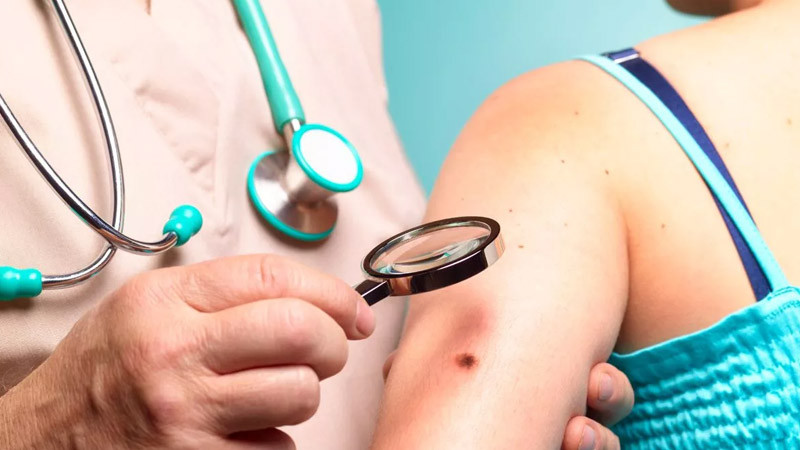Doctors Reveal Five Major ‘Red Flags’ That Indicate a Potentially Cancerous Skin Mole

(Image: Getty Images)
Throughout our lives, we typically develop between 10 to 40 moles in various quirky shapes and sizes, according to dermatologists. However, distinguishing harmless moles from potentially dangerous ones can be challenging. Melanoma skin cancer causes over 2,000 deaths annually in the UK, making it crucial to recognize the warning signs.
Two doctors have highlighted the major red flags to watch for and when it’s time to call a doctor. Dr. Sooj, an NHS GP and A&E responder, shared the widely used ‘ABCDE’ checklist on TikTok, which serves as a helpful starting point for anyone concerned about their moles. “Moles are small colored spots on your skin,” he explained on his @doctorsooj page. “You may have a new mole or notice a change in an existing mole. It’s most likely nothing to worry about, but here are the signs of melanoma, a type of skin cancer.”
The ‘ABCDE’ checklist stands for:
- A – Asymmetrical: Unlike typical moles, melanomas tend to have an uneven shape or ‘two very different halves’ in terms of color and texture.
- B – Border: Melanomas usually have a ragged or irregular border.
- C – Color: Melanomas often have a mix of colors, such as brown, black, red, or pink.
- D – Diameter: Melanomas are typically more than six millimeters wide, about the size of a pencil eraser.
- E – Evolving: Any mole that changes shape, size, or color, or starts to bleed, itch, or become crusty, is more likely to be a melanoma.
Dr. Gareth Nye, a senior lecturer at Chester Medical School, also emphasized the importance of checking moles, especially in areas most exposed to the sun, such as arms, legs, face, and neck. “Often missed areas of sun cream are also likely sites including the back and tops of feet,” Dr. Nye explained. “Cancerous moles normally change color to become darker, change shape and become irregular, and may even bleed or become itchy.”
The difficulty lies in distinguishing between normal and abnormal moles. If you notice a new mole or changes in an existing one, it’s always worth getting it checked. Pregnancy can also cause changes in moles, but they should still be evaluated by a healthcare professional.
Dr. Sooj advises people to track changes in their moles using a phone camera or asking a loved one for their opinion. However, under no circumstances should anyone attempt to remove a mole themselves. Dr. Nye warned, “You increase your risk of infection massively and can cause a permanent scar. If the mole is cancerous, you are not removing the underlying cancerous cells, which can lead to the growth of a new mole or the spread of cancer to other parts of the body.”
When visiting a GP, it’s helpful to have information about when the mole first appeared, its initial appearance, and how it has changed over time. Photos can be particularly useful in illustrating these changes to your doctor.


